Our common understanding about cities is informed by how they developed. In lower density or rural areas, they tend to be small with less associated infrastructure and plenty of room for people to spread out. When cities are near water, they reflect it commercially—often geared toward facilitating trade and the movement of goods. As populations grow, cities expand outward and, as constrained by geography, often upward. As space becomes more valuable, cities eventually grow vertically. The wealthy will often occupy the high floors, with good views; the poor then live in their shadow.
As cities grow, the roads, sewers, and services must also expand, bit by bit. Transportation systems develop and evolve to move inhabitants as they need, utilizing new modes of transportation through streets and tunnels often built for something prior. Congestion, pollution, and complaints are inevitable byproducts of these familiar processes.
But what if there was a different way?
Saudi Arabia’s current population is 32 million. It is projected to reach about 45 million by 2050. Yes, it is a large country — it occupies 830,000 square miles, making it the fifth-largest country in Asia, second largest in the Arab region, and the largest in West Asia and the Middle East. Given its size, it is understandable that some people do not quite grasp that some of its existing infrastructure is at risk of having its capacity strained as growth continues. Fortunately, there is plenty of wonderful space for development.
[su_lightbox type=”image” src=”https://ncusar.org/blog/wp-content/uploads/2023/08/neom-overlay-2000×1125-1.png”]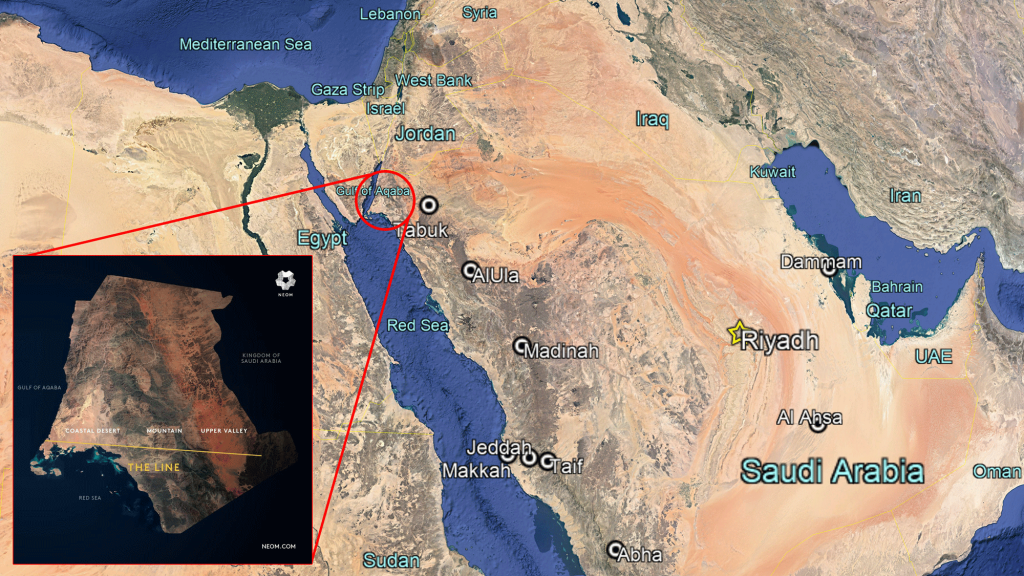
Saudi Arabia has two unique assets: great space and great wealth. And, His Royal Highness Crown Prince Mohammed Bin Salman Bin Abdul Aziz Al Saud has a flair for bold projects. One noteworthy project’s ambition is signaled by its name: NEOM. The first three letters come from the Ancient Greek prefix neo, meaning “new.” The “M” is from Mustaqbal, an Arabic word meaning “future.” It is also the first initial of the Crown Prince’s name.
[su_lightbox type=”image” src=”https://ncusar.org/wp-content/uploads/2025/02/NEOM-map-preservation-areas-zoomed.jpg”]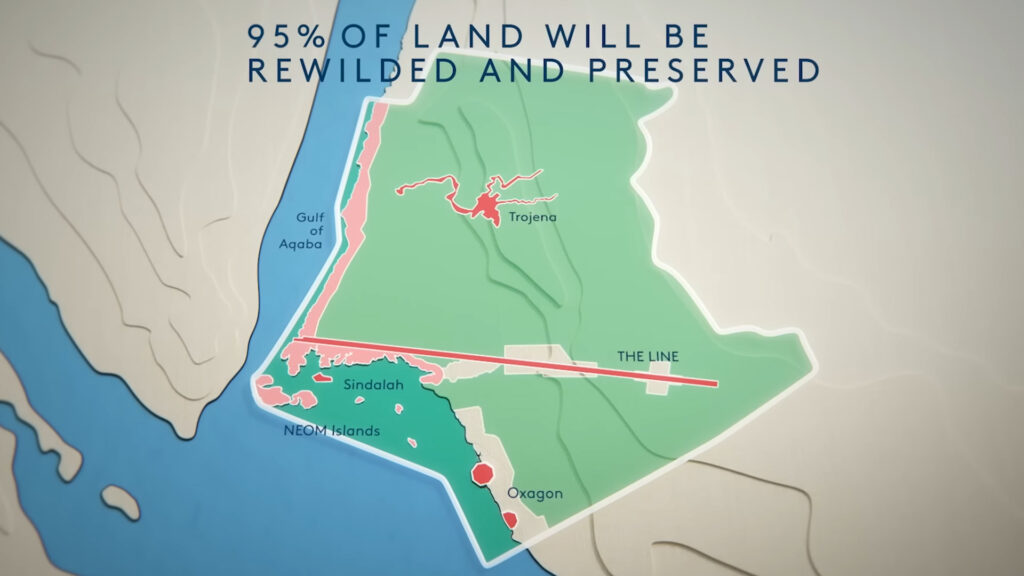
In the West and in large cities around the globe, “biggest” and “newest” often mean a 100-some-story steel needle dominating the skyline. In Saudi Arabia, where NEOM’s first goal is “thinking differently about everything,” one particular project is, literally, a new city that aims to be 100% sustainable. It is being designed to be walkable and rely completely on renewable energy. “The Line,” as it is called, is envisioned to stretch over 105 miles (170 kilometers) on the Red Sea coast in the northwestern Saudi Arabian province of Tabuk.
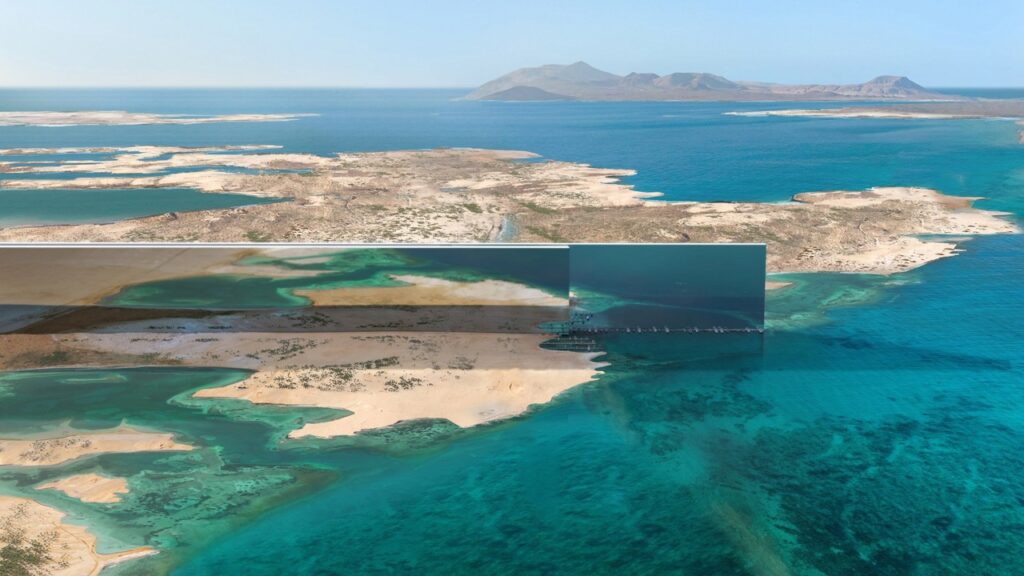
The Line lies within the 10,230 square mile NEOM development — about as much land as the country of Belgium. NEOM’s anticipated cost to Saudi Arabia’s Public Investment Fund: $500 billion. An epic investment? Yes, but this 16-borough living laboratory is a central element in Saudi Arabia’s Vision 2030 strategic initiative. The “wow” factor is key.
As the Crown Prince has observed, the purpose is “to raise the capacity of Saudi Arabia, [and to] get more citizens and more people in Saudi Arabia. And since we are doing it from nothing, why should we copy normal cities?” He means to innovate in every possible way. When was the last time you heard of a young leader using his authority to move forward a massive development project that was seeking to be car-free and carbon-neutral? With The Line, he has invoked “vertical urbanism,” and boldly announced that he is seeking to “tackle the challenges facing humanity in urban life today and… shine a light on alternative ways to live.”
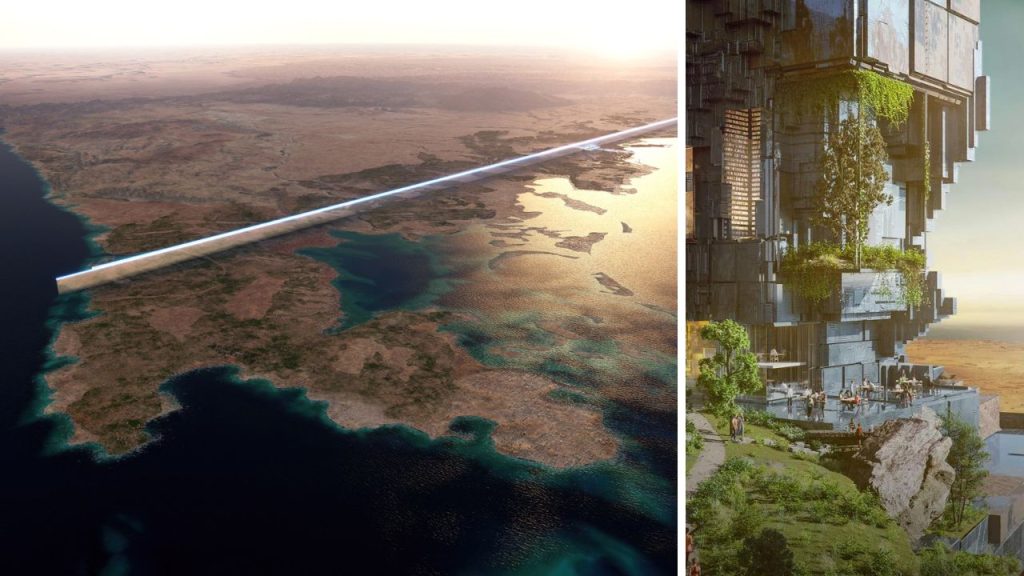
The Line is designed to be divided into 140 modules—each 200 meters wide, 800 meters long, and 500 meters high. Each module could house up to 80,000 people. The first five modules will be each be designed by a different architecture studio. Yes, the size is almost beyond imagining, but not for the visionary architects working on it. Listening to these seasoned design specialists reveals dramatically different and exciting dreams for the future.
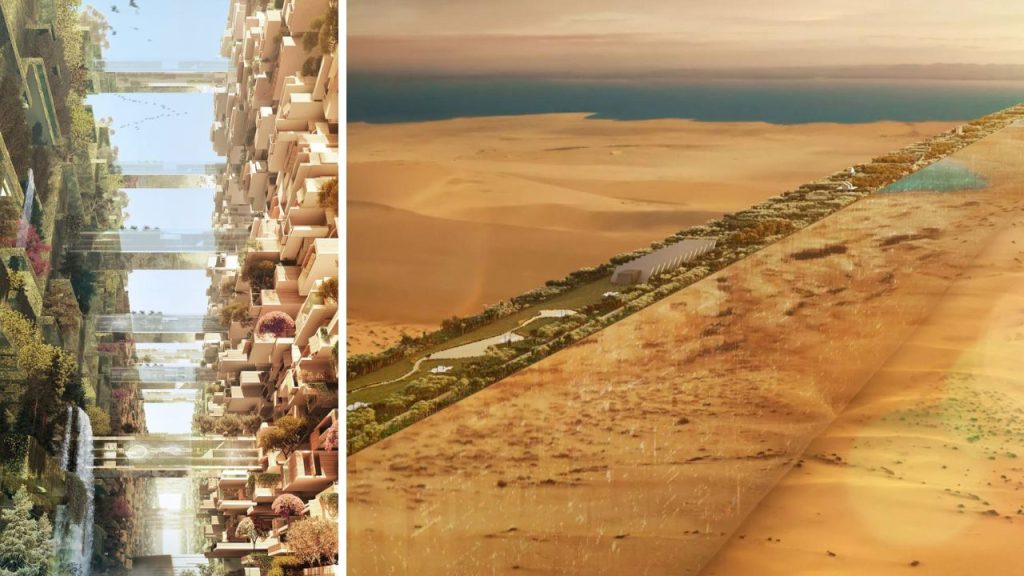
Thom Mayne, founding partner of Morphosis, said The Line is “a complicated project, but the big idea is incredibly simple.” He explained that when thinking about the idea, “[i]t was very important to us to develop the scale that broke down socially into communities that had personalities and gave people opportunities to live in very different environments like you would in London or Manhattan.” Mayne connects the vision to larger societal advances. “I drive a Tesla, and I see that now that’s transitional. That’s the last car before there’s no cars.”

Peter Cook, founder of Cook Haffner Architecture Platform, is 86 years old. His age matters, he contends. “It’s always assumed the young are more progressive. Now, I think the youngest architects are nervous. They’re very nervous. They’re not natural experimenters.” As for Cook, he observed that he “came out of a funky period.”
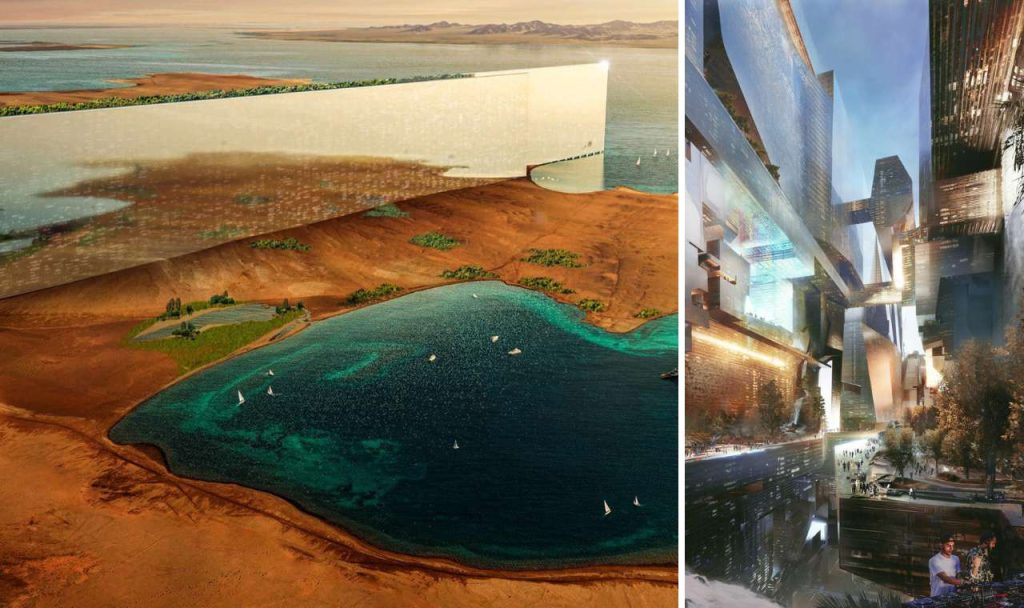
Alexander Rieck, co-founder of LAVA, emphasized that “[t]he questions and the threat on our planet is so immense, that I really don’t understand why we try to answer these questions with old answers.” He argues that something like what is happening in NEOM “has not been done before. We need this pioneering spirit in order to create, not only cities, but to create a planet, which will sustain the next couple of thousand years.”
There is universal agreement on the mission statement: the development must be in harmony with a quality urban living experience and the nature that surrounds it. To achieve this it is crucial that the Line run on 100% renewable energy and that 95% of the land be preserved for nature — percentages that will be hard for any country to beat.
[su_lightbox type=”image” src=”https://ncusar.org/blog/wp-content/uploads/2023/08/The-Line-digging-side-by-side-rendering-1920×1080-1.png”]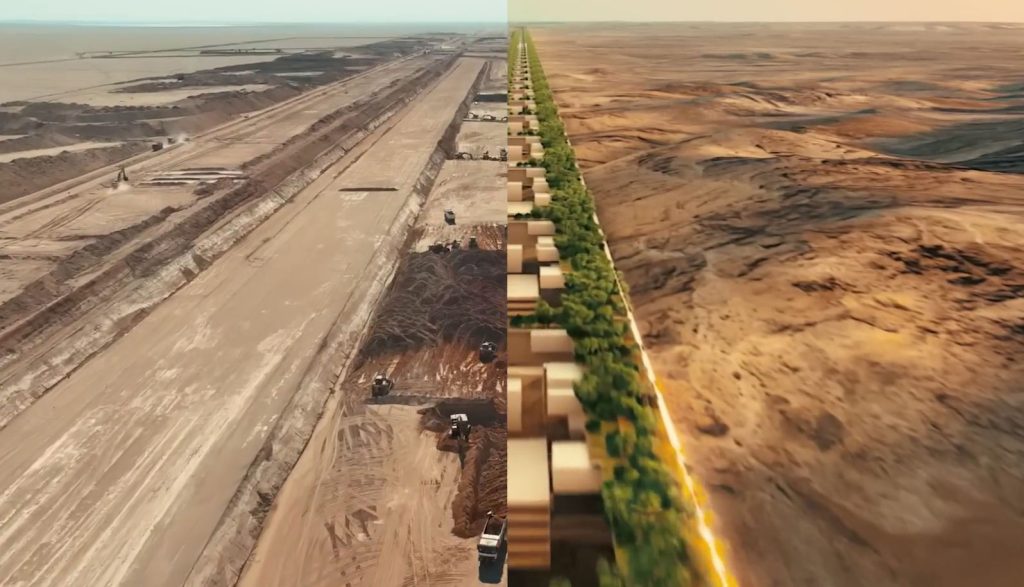
How does The Line aim to achieve such lofty criteria? By compacting the city between two 1,600-foot-high mirrored buildings that will be separated by an outdoor space. “Urban sprawl” will definitely not be a factor here. Nor will pollution. Transportation is, of course, critical. The design includes a high-speed train that can travel from one end of the city to the other end in just minutes—it should make no one nostalgic for a personal car.
The founders hope The Line will be home to as many as 1.5 million people by 2030. By 2045, they dare to dream that 9 million will live there. Will it be as crowded as a European or American city? The creators do not think so—this mega-city will be 33 times bigger than New York.
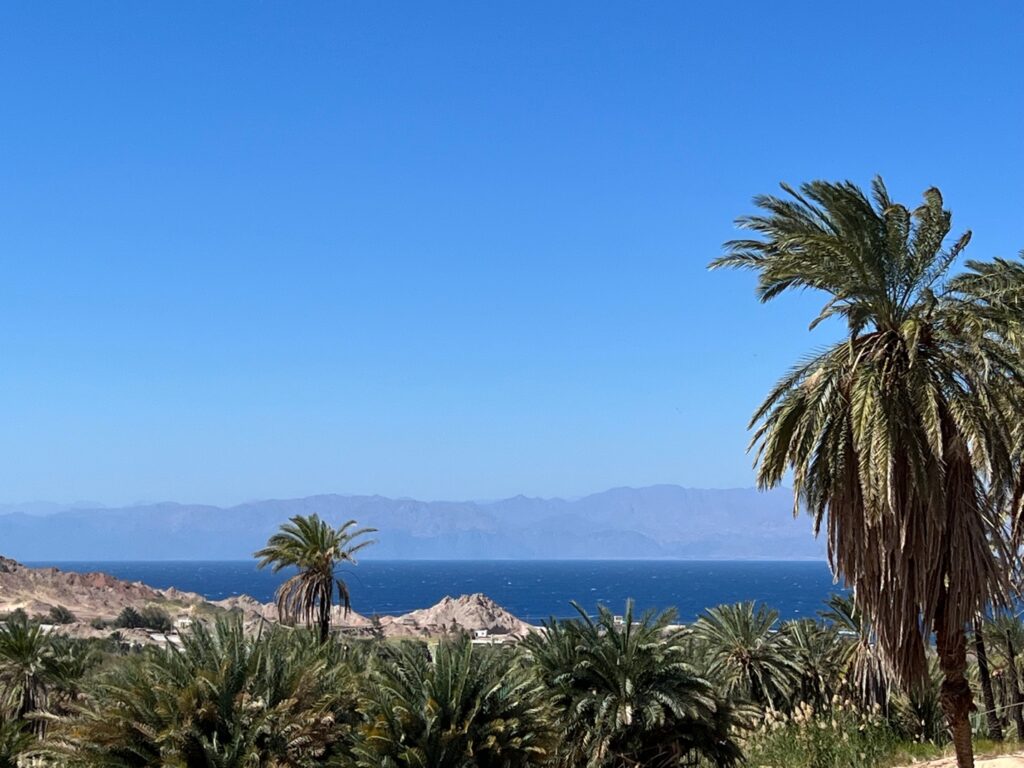
Crews broke ground for “The Line” in 2019. It has not been without controversy and opposition. As with the creation of Central Park in the 1850s in New York City, NEOM has had to resettle people and towns to make way for its construction.
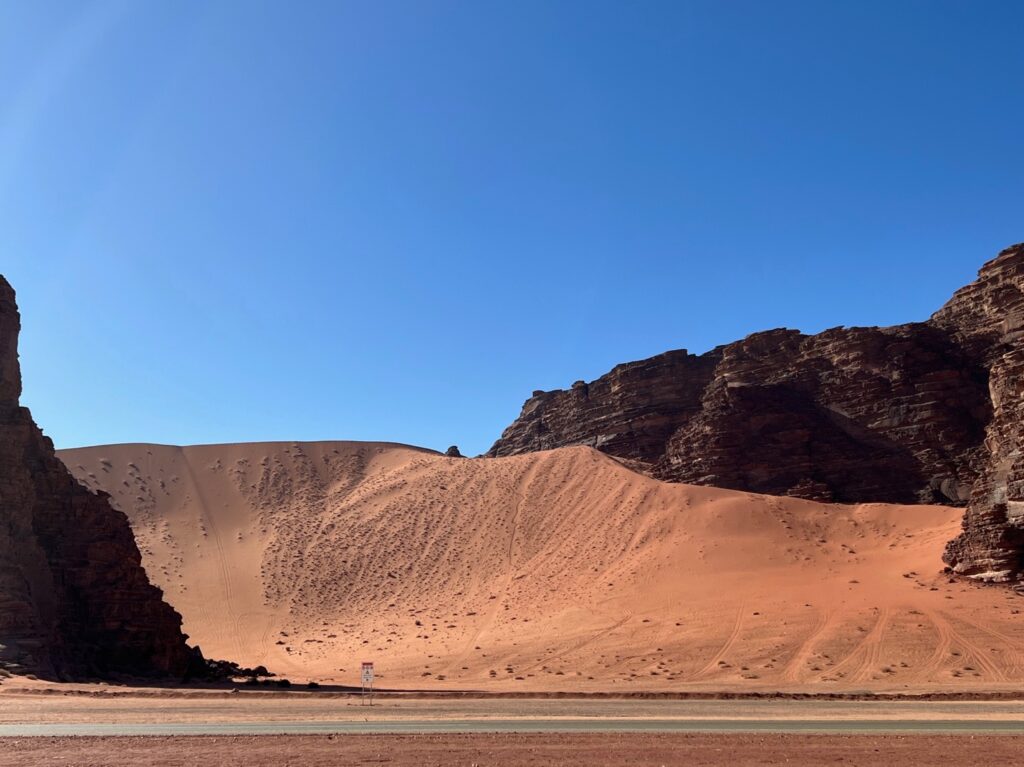
Recently, Saudi Arabia succeeded in being named the host of the 2029 Asian Winter Games. At NEOM, its work continues on airports, housing, high-speed trains, infrastructure, and the deployment of technology, all powered by cutting-edge renewable energy sources. Saudi Arabia is the world’s second largest oil producer and largest exporter of oil. Its development initiatives aim to ease its dependence on the fossil fuel.
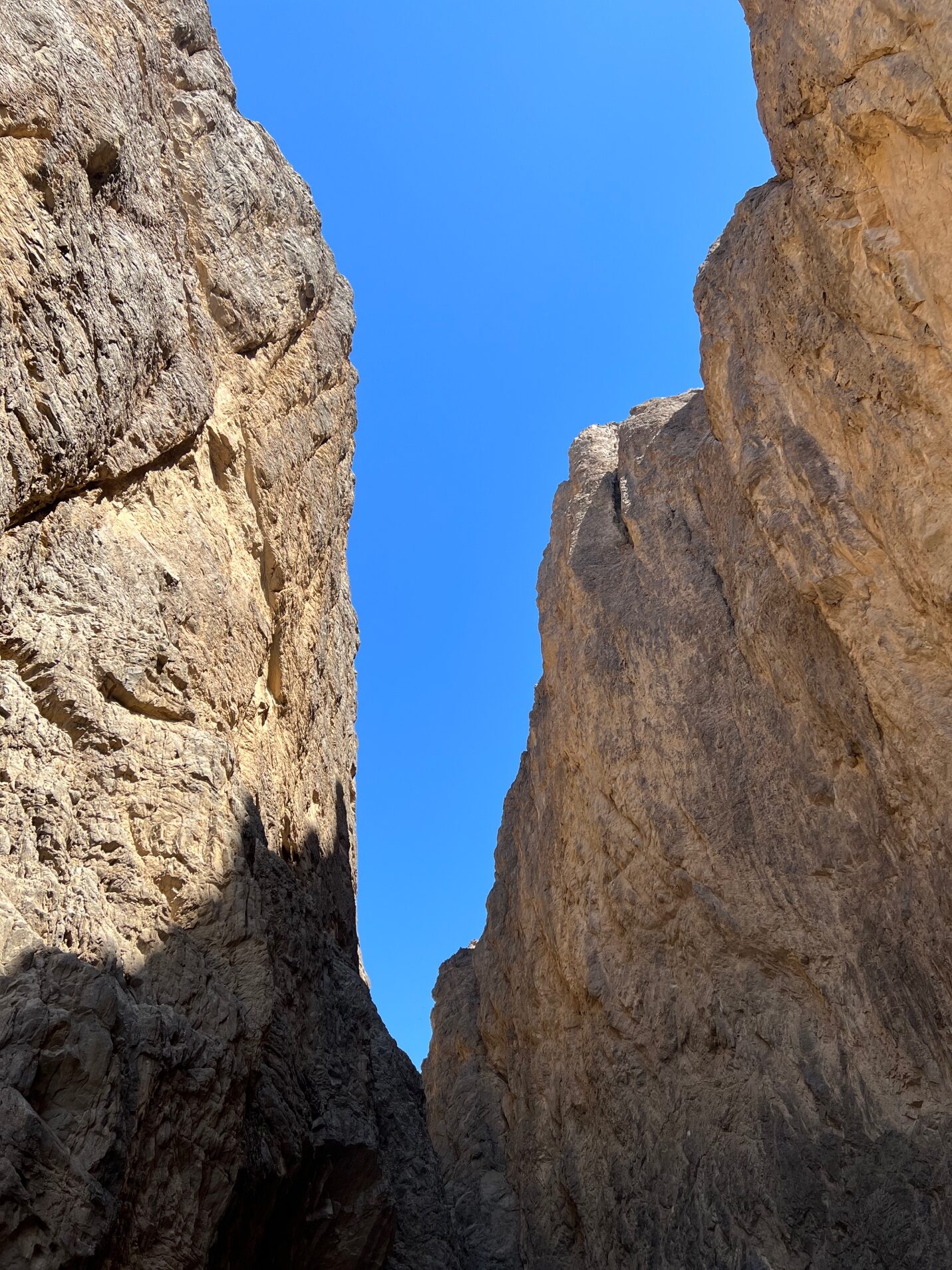
With The Line, it is hard to put the ideas, the plans, the images, and the rhetoric together to get a picture one can absorb. It is so different; there are no cultural touchstones to ground you. “I can’t think of anybody that wouldn’t want to be part of this project,” says architect Thom Mayne. The legendary Peter Cook has said, “If it succeeds, it will be a new Babylon.” It “is something that is intriguing to many people, puzzling to many people, and in some ways, puzzling even to those who are involved in designing it.”
One person who is not puzzled is Crown Prince Mohammed bin Salman. “They say a lot of projects in Saudi Arabia can’t be done, they’re too ambitious,” he says. “They can keep saying that and we can keep proving them wrong.”
